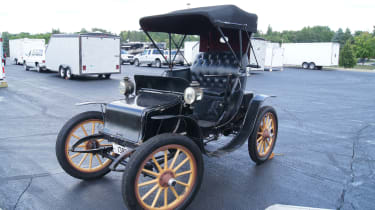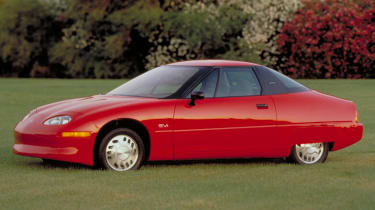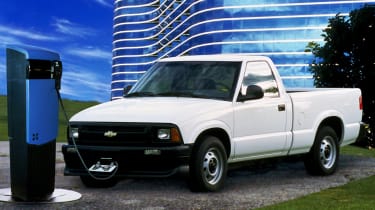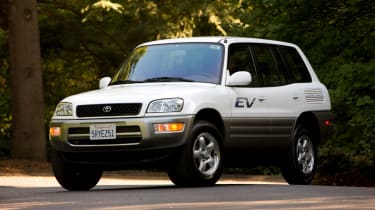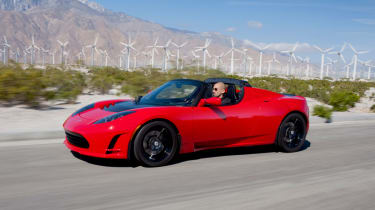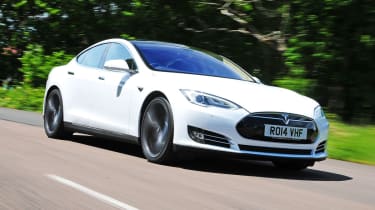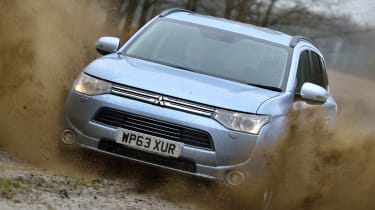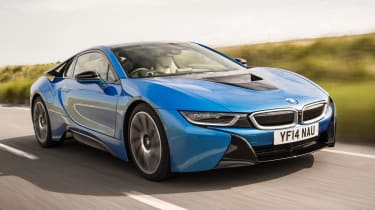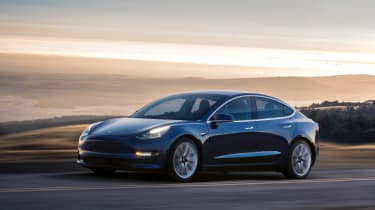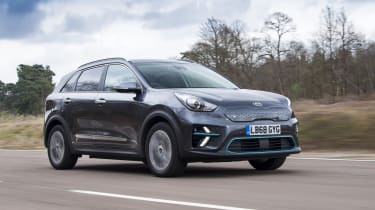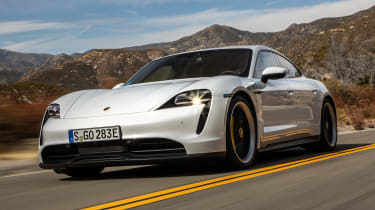The most influential and important electrified cars
Electric and hybrid cars have come a long way in a decade or so, but you might be surprised to learn that they’re not a new invention
The electric revolution is well and truly in progress, and you’ll have probably noticed a lot more EVs on the road. Perhaps your neighbours have swapped petrol pump for plug socket, or maybe you’re already driving an electric or plug-in hybrid car, enjoying its quietness, nippy acceleration and zero local emissions.
If you’ve been used to petrol and diesel cars for the entirety of your driving life, then the figures and measurements used to compare electric cars may seem confusing. Then there’s the charging infrastructure and all the different providers, potentially all with different costs and outputs. If that’s all swirling around and you’re trying to make sense of it all, you’ve come to the right place.
Our guides to how much a charge costs, how long it’ll take, home charging and rapid charging when out and about will clarify matters. We can help unlock the world of electrified cars, giving you all the tools and information if you’re looking to move away from traditional petrol and diesel engines.
There are plug-in hybrid and hybrid models if you can’t have or don’t want a fully electric car this time around. These pair a battery and electric motor with an engine, so you might see them as the best of both worlds, or as a way of dipping your toe into the water to see how electric driving and recharging suits you.
Modern electric cars could feasibly be your only car if you don’t drive hundreds of miles a day and have somewhere to charge up regularly – be it a home wallbox or a local public charger. That wasn’t the case even 15 years ago, when an EV came in the form of the slow, unsafe, cramped Reva G-Wiz. EVs have improved so much in such a short time, but the first electric cars walked so modern ones could run.
Here are the most influential electric cars ever produced. These tell the story of the EV, and the first chapter might start a lot earlier than you expected:
1881 Salvo trike
Incredibly, the world’s first rechargeable EV predates the Eiffel Tower. A fellow Paris resident, Gustave Trouvé, fitted two small electric motors onto a British-built Coventry Rotary ‘Salvo’ tricycle, creating a one-off electric trike. Trouvé and a friend tested it along the Rue de Valois in Paris, and an eyewitness is quoted saying their “attention was drawn by a man who was on a tricycle and was arriving at full speed”.
You might expect the eyewitness to have been more surprised than that, especially as Trouvé’s trike was built five years before the petrol-powered Benz Patent-MotorWagen, the world’s first production car. The Salvo tricycle could hit 7.4mph and was good for a theoretical range of 11 miles, as the batteries could last for an hour and a half. A bigger motor was later fitted, doubling the top speed – which would surely have felt rapid given how the trike was rickety and open to the elements.
1899 Baker Electric
Fast-forward 18 years and rudimentary horseless carriages had become proper cars, albeit still quite simple in design compared to modern vehicles. The Baker Motor Vehicle Company specialised in building electric cars and, while it was only in business from 1899 to 1914, the company produced a wide range of different models and body styles. Customers included Thomas Edison, and the company’s prices meant they were only for rich buyers – some models cost the equivalent of around £100,000!
Despite that, Baker sold 800 cars in 1906, making it the biggest electric-car maker in the world at the time. However, it also had to face a public that was heading away from electric cars. A high-profile crash killed two spectators in a speed trial on a public road in New York, and, while petrol cars were dirtier and noisier, they were also easier to refuel and cheaper. Electric powertrains were put on the back burner for the best part of a century, although they were used in milk floats and mobility vehicles, among other things.
1997 GM EV1
Manufacturers were starting to explore if electric cars could be a viable alternative to petrol by the 1980s, and General Motors’ Impact EV concept drew a strong reaction when it was revealed in 1990. A few years later, GM launched the EV1, its first car designed specifically to be electric. It brought streamlined looks for maximum efficiency – like the first-generation Honda Insight – and was available to lease in a select few American cities.
Customers praised the EV1, but GM showed it wasn’t really interested in – or perhaps even scared of – electric cars at that time. Citing the lack of money-making ability and problems with parts and liability, General Motors took back the EV1s at the end of the leases and crushed the vast majority of them, to the dismay of previous owners and environmental groups. It was suggested that the US oil industry had conspired to stop electric cars being developed.
1997 Chevrolet S-10 Electric
There are now a few electric pickup trucks edging close to production – such as the Tesla Cybertruck, Ford F-150 Lightning and the Hummer EV – but in the late 1990s it was briefly possible to buy an electric truck. The Chevrolet S-10 Electric was produced in 1997-98, and primarily made available to utility companies’ fleets. It’s thought 60 were actually sold, and a handful remain working today.
The first electric pickup used the same powertrain as the GM EV1, with a 112bhp electric motor and the choice of 16.5kWh lead-acid or 29kWh nickel-hydride batteries. It may have been more expensive, but the 29kWh battery made the truck more usable; the range was estimated at 90 miles, rather than the 45 miles you could achieve with the 16.5kWh option. That’s slightly less than the EV1 managed, due to the pickup’s less aerodynamic shape.
The S-10 Electric was front-drive, whereas the regular S-10 was rear-drive, but the styling changes between the two were minimal. Ford also created an electric Ranger pickup from 1998-2002.
1997 Toyota RAV4 EV
The first electric SUV came out in the same year, but from Toyota instead of GM. Initially available for businesses to lease (to meet California’s zero-emission vehicle policy), the RAV4 EV then became available to buy for private customers in 2002. Demand was high from the public; Toyota sold all 328 that were built, which was more than initially intended, so it’s reported that the last batch was built from spare parts.
America’s EPA cycle (thought to be stricter than European emissions tests) rated the RAV4 EV as capable of 95 miles between charges, while performance was leisurely: 0-62mph took 18 seconds. But the RAV4 EV’s limited number of moving parts meant some of the cars sold have been really durable, with some reaching 150,000 miles. A second-generation RAV4 EV was launched in 2012, with collaboration from Tesla and a 2,600-strong production run.
1997 Toyota Prius
Meanwhile, Toyota was also working on its first production hybrid, the now-iconic Prius. The name was chosen as it was to be the precursor for a number of other hybrid vehicles, and the brief was to make it fuel-efficient and environmentally friendly while giving all the benefits and creature comforts of a modern car.
It was expensive compared to rivals, but there was a reasonable amount of standard equipment and you’d enjoy cheaper running costs than a petrol or even a diesel car. Toyota claimed the Prius would manage 60mpg in town, compared to 25mpg for a petrol Ford Focus of the same age. And you could watch your efficiency in real time with the eco display on the central touchscreen. The Prius became the face not only of green motoring but of reliability, too, making it the perfect choice for taxi drivers up and down the country. It’s not hard to find Priuses with over 300,000 miles on the clock.
2008 Tesla Roadster
Tesla is now the ‘it’ brand, and its first-generation Roadster was the US company’s first proper model. It was clearly based on the Lotus Elise, and built on the same production line to a certain extent, but there was no Toyota-sourced 1.8-litre petrol engine under the bonnet. Powerful electric motors allowed 0-60mph acceleration in under four seconds and the battery was reportedly good for 244 miles between charges. Some testers reported figures some way off that, however.
With all its power available from a standstill, the Tesla could out-accelerate Porsches and Ferraris. Instantly, electric cars no longer had to be slow or deliberately eco-minded; they could be cool and worthy of inclusion on a child’s bedroom wall. The first Roadster went to Tesla boss Elon Musk, who made the car go even faster by sending it into space in 2018, as a payload for his SpaceX rocket company. A new Tesla Roadster is in development.
2010 Nissan Leaf
The Nissan Leaf wasn’t the very first mainstream electric car, but it might have been one of the first that was actually worth buying. When the Leaf came out, eco-conscious buyers no longer had to suffer the Mitsubishi i-MiEV/Peugeot iOn/Citroen C-Zero blobs. The Leaf could seat five people and carry a decent amount of luggage, and didn’t look too outlandish. Some of the styling details were a little unusual, but besides the blue accents and no exhaust pipe, the Leaf looked like a Focus, Astra or Megane.
The downsides were that the Leaf cost a chunk more than its petrol-powered rivals, and that it’d realistically only do 85 miles on a charge. Nissan realised that these two factors caused slow initial sales, so in 2013 a revised Leaf was launched with a slightly longer range, tweaked styling and extra luggage space. Until late 2019, the Leaf was the world’s best-selling electric car.
2010 Tesla Model S
Love or loathe Tesla, it’s fair to say that the world wouldn’t have so many electric cars if it weren’t for the American brand. Not just because its cars have sold very well, but because Tesla showed that electric cars could offer a long range, fast charging and more refinement than all but the quietest petrol or diesel-powered cars. And, while the Tesla Roadster was cool, it was out of reach for most buyers; the Tesla Model S was a genuine rival to something like a BMW 5 Series or Mercedes E-Class.
It’s been on sale for over a decade, but rivals have only just caught up. The latest Model S will manage over 350 miles on a charge, beat nearly every supercar on the planet from a standstill and even drive semi-autonomously in some situations. Early models offered seven seats as an option and the interior has always been seriously impressive, with a vast touchscreen controlling most of the car’s functions – and allowing some fun features.
2013 BMW i3
The BMW i3 helped to launch BMW’s 'i' brand for electrified cars, with futuristic styling that still look fresh today. It showed electric cars as something new and exciting, and the technology underneath was just as interesting as the styling. The i3 was the first mainstream car to use carbon-fibre reinforced plastic (CFRP), and had door panels and interior trim that were partly made from hemp. This brought two benefits: sustainability and lighter weight than conventional materials.
Now, the BMW i3 is only sold as a fully electric car, but in previous years you could also buy a ‘range-extender’ version, which also included a small petrol engine as a generator to charge the battery and increase the range. Initially, the range for the electric-only model was around 80 miles; now it’s around double that.
The i3 also impresses with a light-feeling, spacious cabin, which has always been quite minimalist in design.
2013 Renault ZOE
Nowadays there's a reasonably wide choice of electric superminis, including the MINI Electric, Peugeot e-208 and Vauxhall Corsa-e. But Renault beat them all to it, putting its ZOE into production back in 2013. It’s a similar size to the Renault Clio, and the interiors of the two cars shared a lot of parts. The ZOE brought blue touches and some quirky styling features to mark it out as an electric car.
Battery degradation for electric cars was a worry in the ZOE’s early years, so Renault offered the option to buy the car with or without the battery – you could lease the latter for around £50-£100 a month. That isn’t the case any more and, as battery technology has improved, so has the Renault’s range. Now, the ZOE will manage almost 250 miles between charges in perfect conditions, which is nearly double as much as some small electric cars.
2013 Mitsubishi Outlander
Being a green-car pioneer seems to equate to big sales; the Renault ZOE was one of the most-bought electric cars for a number of years, and the Mitsubishi Outlander PHEV was Europe’s best-selling plug-in hybrid for five years running between 2015 and 2019. Most of Mitsubishi’s sales came from the PHEV, too, and Mitsubishi leaving Europe may well be a direct consequence of Outlander PHEV sales declining – as a result of far more plug-in hybrid SUVs being available.
A 32-mile electric range made it exempt from clean-air-zone charges and gave the flexibility of zero-emission driving in town and a conventional petrol engine for longer journeys. A full charge from a three-pin plug socket was finished in three and a half hours, and CHAdeMO fast-charging allowed an 80% top-up in 25 minutes. It’s a formula that has unsurprisingly proved popular, which is why there are so many electrified SUVs on the market today.
2014 BMW i8
The BMW i3 may have looked futuristic, but the BMW i8 looked even more so. It was almost identical to the breathtaking BMW Vision EfficientDynamics concept, and, with all its angles and ducts, it could be a racing car from another planet. There was nothing old-school about the drivetrain, either, as this Porsche 911 rival was a plug-in hybrid from the outset.
A sports car using a 1.5-litre engine from a MINI doesn’t immediately sound like a recipe for success, but in the i8 it was tuned to 228bhp – and joined by two powerful electric motors. Flat-out acceleration from 0-62mph takes just 4.4 seconds and the top speed is 155mph. Yet even early models should be capable of 20 miles of electric-only range, with later versions getting a bigger battery to boost efficiency.
Like the i3, carbon-fibre was used to keep the chassis strong but lightweight. Overall the car feels very high-tech, which extends to the interesting and driver-focused interior.
2017 Tesla Model 3
Have you noticed the sheer number of Tesla Model 3s on the road? In fact, during one month of 2020, the Model 3 was the best-selling car in the UK. The Model 3 is also desirable for both company-car users and private buyers, and Tesla’s long-term plan always involved a cheaper car than the Model S and Model X.
While it’s not the £35,000 car initially promised (and arrived later than planned), the Model 3 is a direct rival to executive saloons like the BMW 3 Series and Audi A4. The advantage for business users is clear to see; electric cars have incredibly low Benefit-in-Kind (BiK) tax rates, so running a Model 3 will cost a fraction of a petrol or diesel-powered car.
Private buyers tend to be wowed by the technology on board, and the highly impressive range between charges. You wouldn’t need a petrol car for longer journeys – the Model 3 can manage those with ease, and recharging is easy at the brand’s Supercharger network.
2018 Kia e-Niro
The Tesla Model X and Jaguar I-Pace will both manage over 280 miles on a charge, but both are priced out of reach of many buyers. It looked like electric SUVs with long ranges would be exclusively for well-heeled customers until the Kia e-Niro came along. This was a sub-£40,000 car with a 282-mile range, and attractive finance and lease deals made it even more attainable.
The e-Niro showed that you didn’t have to shell out on a luxury product to get a long range, and it really will do 282 miles on a charge. Kia and Hyundai’s range estimation readout is one of the most accurate we’ve seen, evaporating any range anxiety you might’ve had. As a top-of-the-range model, the e-Niro comes well equipped – and now there are several to choose from, including one that’s eligible for the plug-in car grant. We also love the e-Niro for its smooth drive, fast charging capability and big boot.
2020 Porsche Taycan
Porsche is typically known for its petrol sports cars, but its first attempt at an electric car shows that keen drivers don’t have to worry about a future of EVs. After all, the brand has also diversified with several SUVs and, up until a few years ago, diesel engines, too. The Porsche Taycan is the most convincing rival yet to the Tesla Model S, and arguably feels more special than the Tesla.
Inside, it's just like a Panamera or 911, but the Turbo and Turbo S models will leave those cars for dust. The latter takes just 2.8 seconds to blast from 0-62mph, but the £140,000 price tag is undeniably chunky. Porsche has now introduced cheaper models, including one that’s only rear-wheel drive, and now prices almost exactly match the Panamera. No wonder the Taycan has already been a very strong seller for the German brand. An electric Porsche Macan is set to follow the Taycan into showrooms in 2022.
Most Popular
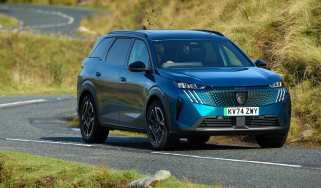
EV Deal of the Day: family-friendly Peugeot E-5008 for £261 per month


